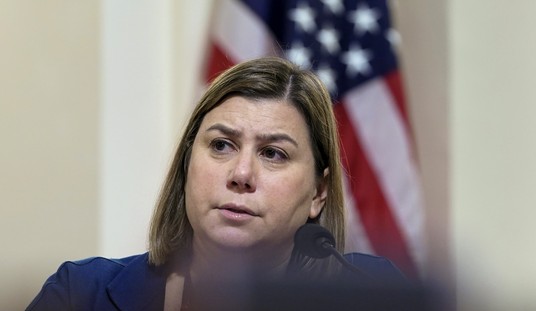
In the previous two parts of this series, I attempted to show how the courts and the Supreme Court have been instrumental in dismantling the intentions of the Framers of the Constitution. This they have achieved through the terrible practice of stare decisis, a practice the Court is under no obligation to follow. To correct a wrong, they have created two other doctrines- substantive due process and Chevron deference- while expanding the meaning of the Commerce Clause. As such, they have vested tremendous powers into the hands of unelected bureaucrats and created the modern administrative state with a big Court blessing.
But perhaps the greatest insult to the Constitution is the Court’s ability to create law on their own without any prompting from any President or any Congress. As mentioned in the first part of this series, the lone dissenter in Plessy vs. Ferguson was the lone Justice who got it right the first time. If the Court had heeded the words of Justice Harlan, there would have been no Brown vs. Board of Education in 1954. Long on social justice and references to sociological and psychological studies, that decision wreaked more havoc than good.
First, education was and should strictly be the province of state and local government. But the decision in 1954 mandated a national solution to a local problem. While we can argue the virtues of an integrated school system, the theory of such being desirous is now so ingrained in jurisprudence that it dictates beyond that which the Court required in 1954. In essence, it dictated that education was some unknown “right” not to be found in the Constitution and as such the “rights” of someone or some group were being violated. The solution was, at times, armed National Guard troops stationed at schools, or court-ordered busing of students well outside their neighborhoods to achieve the realization of this “right.”
Ironically, on many college campuses these days we see a reversion to pre-1954 attitudes among those the decision sought to benefit. Many students who are gay, or black or Latino are shouting for their own housing, classes, and list of demands. They are self-segregating. This puts all that sociological research cited in 1954 by the Court into question. And from Brown comes a myriad of cases involving higher education where the Court still persists in the belief that diversity is an absolute good in and of itself and therefore desirable above all else, outcomes be damned.
Of course, the high watermark of rights created by the Court is perhaps the worse decision. Some point to the Dred Scott decision as to the worst. In that decision, at least Dred Scott got to live, albeit as a slave. In Roe vs. Wade, the Supreme Court sanctioned the murder of countless humans based on a specious “right to privacy.” While they wring their hands over the death penalty, they have condoned the killing of unborn humans in the name of privacy.
To see how this privacy right works in another context, a recent case is instructive and illustrates how far the Court has strayed from Constitutional interpretation and the clear wording of the text. That case is Carpenter vs. the United States. Carpenter was a career armed robber. Police used cell phone location data to convict him. He argued that this violated his Fourth Amendment protection against unreasonable search and seizure.
The Framers did not have cell phones, but neither did they have landlines. But a case from 1928 involving the conviction of a bootlegger found no problem adapting the Bill of Rights to new technology. In that case, Justice Taft noted that the telephone lines were outside the bootlegger’s premises for starters and that conversations are not “papers.” Hence, there was no Constitutional violation.
All that was “settled law” until 1967 when the Warren Court decided that what the Framers really meant by “persons, houses, papers and effects” was a person’s “reasonable expectation of privacy.” One can see how this clearly fits into the Bill Of Rights’ “penumbras and emanations.” In the Carpenter decision, the Court relied on this “reasonable expectation of privacy” to overturn his conviction.
We can parse the words of the Fourth Amendment. As noted in the dissent by Thomas, a cursory review of a dictionary reveals that when the word “search” was inserted into the Amendment, it meant looking into suspected places. If you transfer the Amendment’s protection from places to people, you have effectively read a word out of the text. Writing “their…papers” also cannot mean someone else’s records so a subpoena for cell company records, upon which Carpenter based his appeal, is also a ludicrous premise. Thomas also asked who decides what a “reasonable expectation” is in the first place? That, he claimed is a policy determination and one better left for the legislative branch rather than the judicial branch of government. Yet, it was Roberts who cast the deciding vote to further subvert the authority of law enforcement.
These lines of reasoning extend beyond a cell phone company subpoena. Besides hamstringing law enforcement with Court-created rights nowhere to be found in the Constitution, or re-interpreting clearly worded Constitutional provisions, the ability to discipline disruptive students has also been hampered. In 2013, a federal judge overturned the will of California voters when he ruled that the state’s ban on gay marriage was unconstitutional. Two years later, the Supreme Court made it federal in the Obergfell decision by declaring that gay marriage violated the Due Process Clause of the Fourteenth Amendment in a decision long on poetry and short on Constitutional sanity and in the face of human existence.
If anyone reviews Supreme Court cases from year-to-year, one finds that they often grapple with problems they themselves created. Most of the cases are statutory interpretation and very few are Constitutional interpretation. What makes this more concerning is their refusal to reach decisions firmly rooted in the words of the Constitution. Their reliance on stare decisis is part of the problem, but their seeming inability to reach the core issues, especially under Roberts who would rather prefer to slither away using legal sleight of hand, is another problem.
Anyone who holds out hope that Roe vs. Wade will be overturned by this Court is seriously mistaken. As they have shown in other areas and in a precious few, there is no willingness to redirect the Court to its proper role. Its proper role is the interpretation of the words of the Constitution given the commonsense usage of those words. It is not to read words, the thoughts of writers, “life” or their preferred outcomes into a decision. It is not to sanction an administrative state and confer upon unelected bureaucrats, no matter their “expert” status, powers that impact everyday life. And it certainly is not to be bound by Court-created principles that have no mooring in the words of the Constitution. At this point in time, we can safely say sadly there is only one Supreme Court Justice (Thomas) or possibly two (Alito) willing to correct previous wrongs. The jury is still out on the two Trump appointees. But if history is any guide, this is one writer who does not hold out much hope.












Join the conversation as a VIP Member